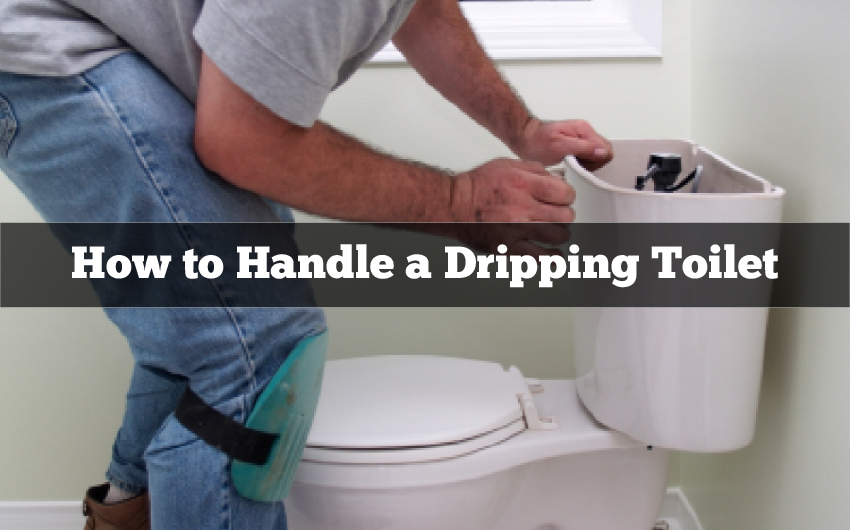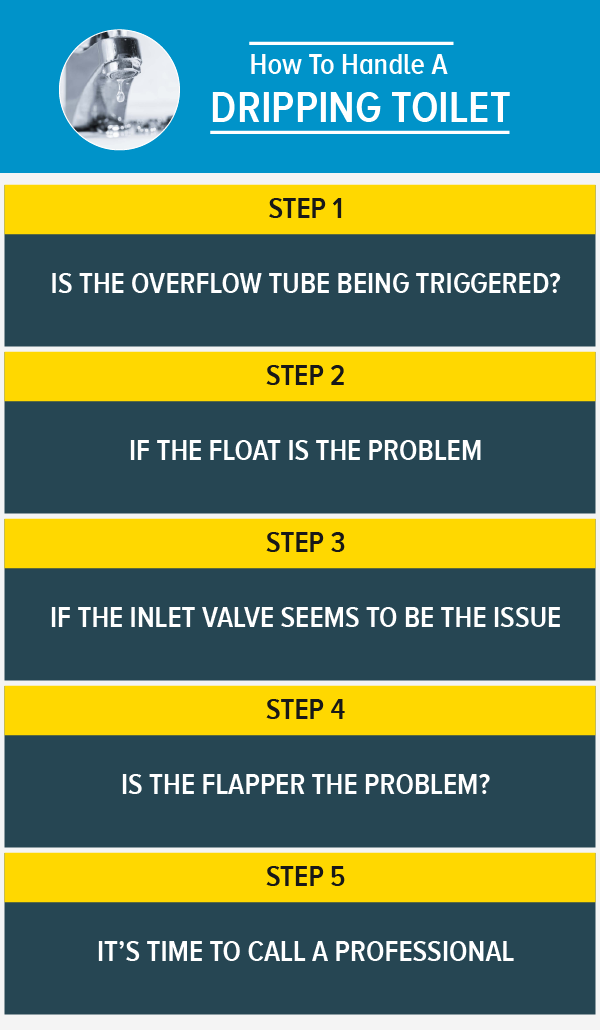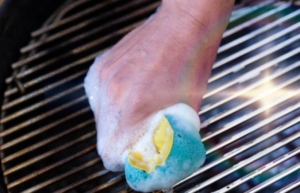How to Handle a Dripping Toilet

A dripping toilet can be a major annoyance, especially if it never seems to want to stop! It can also lead to a big waste of water so you should get to the bottom of it as soon as possible. Follow these steps to fix your dripping toilet by yourself at home.

Step 1: Is the overflow tube being triggered?
Inside your toilet tank, there will be a few different contraptions. You should first find the overflow tube and check whether the water is going over the top of this tube. If it is, then it might be your ballcock’s inlet vale or an issue with the float. If it’s not, then move along to step 4.
The role of the float is to float as the water goes up, which, will in turn, indicate to the inlet valve to close, thus stopping the water from continuing to fill. An issue with either of these means the water is too high and it will keep running instead of turning off properly.
To check, flush the loo with the top of the tank open. When the water has gone most of the way up, you can grasp the top of the float mechanism that’s attached to a rod and pull it until the water stops. Many times this will work, and it means the float is the problem – not the inlet valve.
Step 2: If the float is the problem
Sometimes you will need to fiddle around with the level that the float sits in the tank. This way you can get it to trigger before the water starts pouring into the overflow tube. There will be a little screw on the ballcock that you can twist that will do exactly this, so have a play around and see if this makes a difference. If it does not make a difference, then it is probably the float itself that needs changing. You can pick up a new one (and the rod) from your local hardware or plumbing speciality store.
Step 3: If the inlet valve seems to be the issue
If the inlet valve appears to be the issue rather than the float, it’s generally just easier to replace the whole ballcock rather than trying to fix the inlet valve itself. You need to switch off your water either at the valve at the toilet, or the water mains if you can’t find one. Then, flush the toilet until all the water is gone and drain the tank completely by scooping any leftovers out and drying up.
To remove the ballcock, you’ll need to unlock it from the tank itself. On the outside of the tank you’ll see a nut where the ballcock is secured which you will need to undo. Reach into the tank and take the ballcock out from where it has been secured at the bottom – by pushing up from the outside. Put the new ballcock back in where the old one was and then screw on another nut to secure in place.
Step 4: Is the flapper the problem?
If water isn’t going into the overflow tube on flushing but there’s still dripping or leaking in the bowl then there might be an issue with your flapper. Switch off the water at the valve (or at the mains if it is hidden) and then wait to see if the water level in the tank subsides (about 15 minutes should show results). This might indicate your flapper chain is too tight, or there is a leak.
Change the flapper by draining the tank (outlined in step 3), and then check the flapper seat itself is not dirty, cracked, or damaged and the flapper fits tightly in place. If need be, just pull the flapper out and put back in a new one.
Step 5: It’s time to call a professional
If none of these solutions seemed to fix the issue, and you are finding that your loo is still running, dripping, or leaking, then it’s time to get in the plumbers to take a look at what could be the problem instead. They are experienced with uncovering more obscure causes of leaks in loos, pipes, and sinks. You have put in a good amount of effort in trying to get the job done yourself, but now and then it’s just going to be something crazy that’s the issue that you’d never heard of. There is no shame in getting a leaking toilet plumber to assess the full situation for you!
Read More:
How to Fix a Leaking Toilet Handle
How to Stop a Running Toilet





